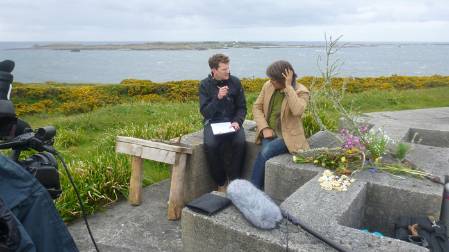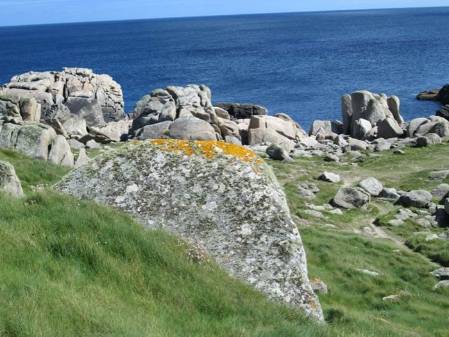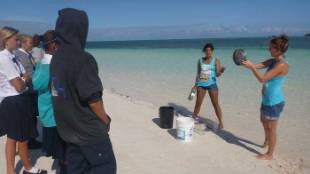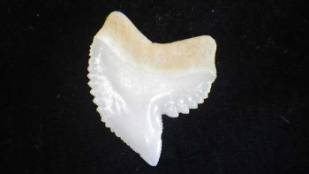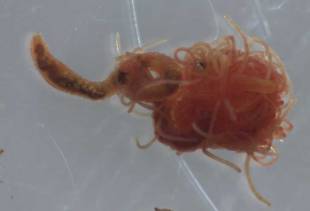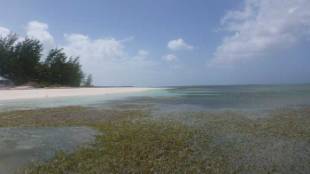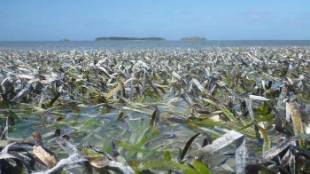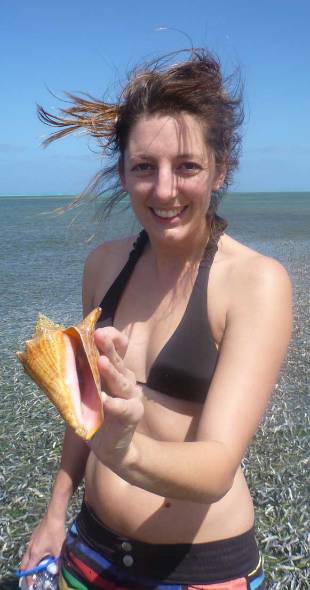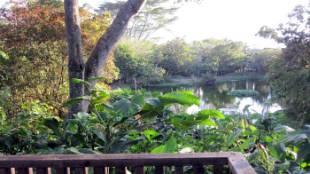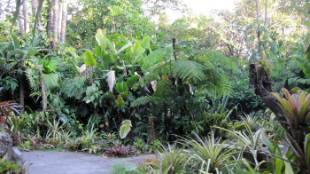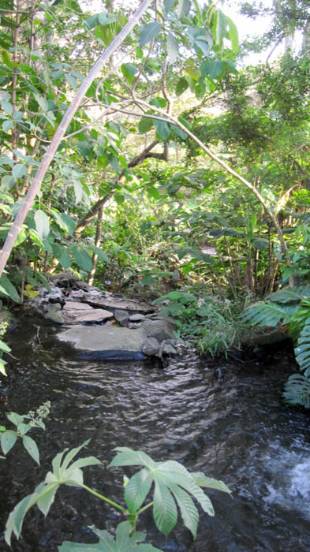Today started dull and overcast - grey and gloomy - but we weren’t going to let the weather get us down because this morning we did our first, live video conference from the field with schools. Students from all over the country get to talk with our scientists and ask questions about what they are doing here in the Isles of Scilly.
Tom chatting to Mark during a video conference with students at a primary school.
In the first VC, primary school students got to meet Mark Spencer, the botanist of the group and team leader, and Jon Ablett, Curator of Molluscs. Mark did a small tour of the wild flowers we can find here, explaining that the Isles are located at a crossroads between Mediterranean plants and northern ones.
The relatively mild climate of the islands mean that plants that are usually more typical of Mediterranean countries find a home here, while for other species, the Isles mark their southern-most limit. It’s an overlapping landscape, which is a delight for us to experience, and a joy for the many species of insects and birds who pollinate these plants.
Museum scientists taking in the beautiful scenery, while Holger Thues (far left) is distracted by a rock covered in lichen!
Jon Ablett showed some of his slugs and talked about innovative ways of preserving specimens for the Museum’s collection, while the white vapours of liquid nitrogen made Mark and Tom (who was hosting the event) feel even more cold. Jon is looking mainly for land snails, but will also try to fish for some octopus and squid as we are not sure which species live in these waters. Keep an eye on this blog to find out what he discovers!
The secondary school students had the chance to meet lichen curator Holger Thues. Holger explained that lichens are composite organisms (comparable to corals), meaning they are a combination of a fungus and an algae living side-by-side in a symbiotic relationship (i.e. they both benefit from one another). Lichens are incredibly important indicators of the environment around them and are often used to study changes in the atmosphere and air pollution.
Orange lichen on a rock, but how did it get its nutrients?
The orange lichen in the photo above only exists in places with high levels of nutrients, you will see them near the sea where the wind itself is loaded with nutrients. However, if you see them on a rock in land, wait and with time you’re more than likely to see a bird arrive ... you’ll soon find out how the nutrients arrived there!
Thanks to all the schools for their many questions during the video conferences, it was great to speak to you all!



